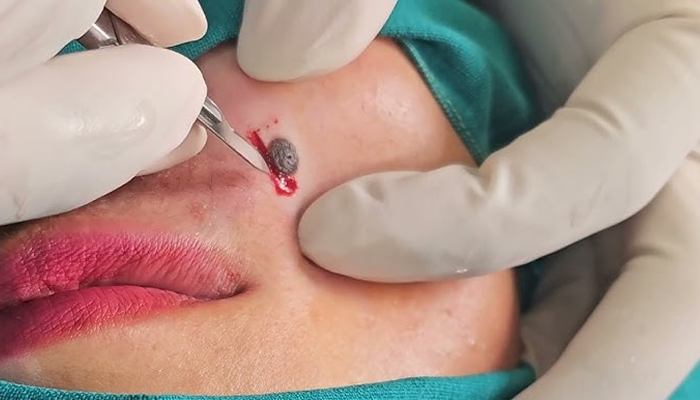Mole Removal Overview
Length of Surgery
Day case
Anaesthesia
This procedure is a day case and patients are able to go home afterwards.
What to expect immediately after the operation
The patient is able to go home after the procedure and will not typically experience any discomfort, swelling or bruising. Recovery is immediate and no time off of work is required.
The Surgery
What to expect Depending on the shape, size and location of the mole, there are varying techniques utilised in skin mole removal. Mr Jawad notes that, in most cases, patients have a local anaesthetic applied to the area.
The most common technique used involves the use of a scalpel to excise the mole, and a border or surrounding skin is normally removed as well. When the mole has been satisfactorily excised, Mr Jawad will then carefully stitch the area, placing the stitches either on the skin’s surface, or slightly deeper, depending on the depth of the mole removal. London clients can expect the procedure to take no more than hour, and is usually performed as a day case.
Patients can also benefit from a slightly different form of skin mole removal. Mr Jawad may sometimes decide to use a scalpel to shave down the mole so that it becomes less noticeable and more consistent with the skin of the surrounding area. When the optimal size has been reached, Mr Jawad will then cauterise the area to stop the bleeding, and he may also prescribe antibiotics to ward off any potential infection related to the mole removal. Clients are advised that as this technique only removes the surface of the mole, it is possible that mole cells may still exist beneath the skin, potentially leading to the mole growing back.
A suspicious looking moles will be sent for Biopsy to confirm its benign.
Possible Complications
- Use recommended painkillers as required.
- There are most often no complications with this procedure, however some patients may be left with a lumpy scar.
- Scar management
After the Surgery
Following your procedure, the affected area may be a little tender and sore, but this should not last, and pain medication can be prescribed as and when needed.
Mr Jawad advises that procedures that utilise the scalpel may sometimes leave scabs, but these commonly heal within a couple of weeks. In some cases the treatment may leave a scar, the size of which directly relates to the size of the mole excised, and removal procedure used. Scars will usually fade within a year.
If you have any questions regarding mole removal, Mr Jawad and his team at the Surgery in London will be happy to give you friendly and experienced advice, and help you make a safe and educated decision that is best for your personal needs.
Recovery
- Use recommended painkillers as required.
- Once healed, it is recommended to massage the scar and apply silicon gel to reduce long term scarring
Submit Enquiry
If you are interested in a particular treatment, please contact us or to find out more about our clinic, please follow the link below.


